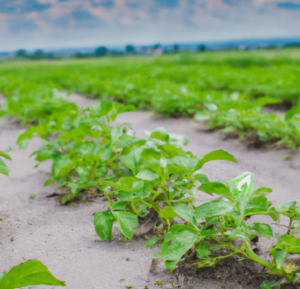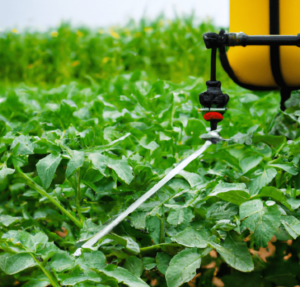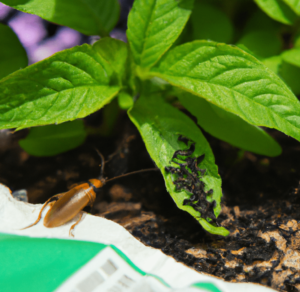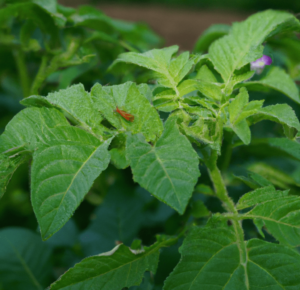For thousands of years, agriculture has been an integral component of human life, supplying us with food, fiber, and fuel. To satisfy the increasing demands of a growing population, the method we raise crops has developed over time. The role of chemical fertilizers in modern agriculture ensures that crops receive the nutrients they require to flourish to their best potential.
Chemical fertilizers are compounds that are incorporated into the soil to supply crops with vital nutrients. They include nutrients that are necessary for plant growth and development, such as nitrogen, phosphorus, and potassium. Chemicals are commonly employed in modern agriculture because they offer a practical and affordable method of giving crops the nutrients they require.
Chemical fertilizers assist raise crop yields and enhance the general quality of crops by supplying them with these nutrients. We’ll dive into the history of fertilizer use, the advantages of chemical fertilizers, and any hazards or negative effects related to their use will all be covered in this article.
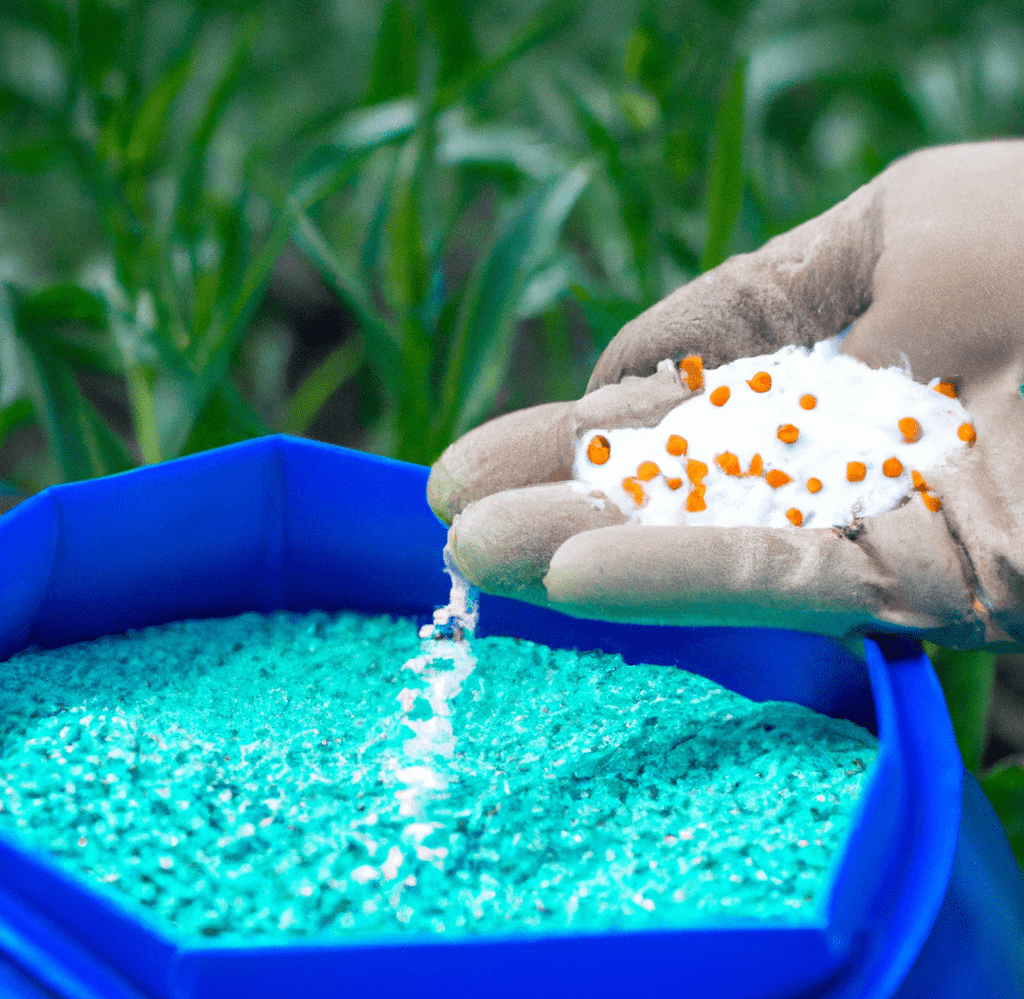
The History of Chemical Fertilizers
Since ancient times, fertilizers have been used to increase soil fertility and increase agricultural yields. Manure, compost, and other organic wastes were employed by prehistoric societies like the Greeks and Romans to fertilize their crops. Chemical fertilizers were created in the 19th century as scientists learned how to synthesize nitrogen and other vital components. Chemical fertilizers have now evolved into a crucial component of contemporary agriculture, assisting in the feeding of an expanding population and enhancing food security.
The Benefits of Chemical Fertilizers
Chemical fertilizers have long been a staple of American agriculture, providing a variety of advantages for crop growth. These fertilizers give plants the vital nutrients, such as nitrogen, phosphorous, and potassium, that they require to flourish. Farmers should consequently expect to see higher yields, better soil fertility, and a higher rate of return on their investments.
Also, the role of chemical fertilizers in modern agriculture results in higher crop output on smaller parcels of land. Chemical fertilizers have helped the United States become one of the world’s top agricultural producers by significantly raising crop yields there. Farmers can produce bigger yields, resulting in more revenues and a more sustainable agricultural business, by giving crops the nutrients they require to grow. Chemical fertilizers are also made to be extremely efficient, allowing farmers to use less of them to get the same benefits. This results in less waste being produced and more effective use of resources, including water and land.
For decades, chemical fertilizers have been used extensively in agriculture, particularly in the United States, to improve soil health and increase crop growth and output. These fertilizers are widely used and well-liked because of a number of advantages:
- Chemical fertilizers supply vital minerals like nitrogen, phosphorous, and potassium that are required for plant growth, hence increasing crop yield and quality. Chemical fertilizers can help increase crop yields and the caliber of the food by supplying these nutrients in the proper quantities. This may result in an expansion of the overall food supply, enhancing food security.
- Chemical fertilizers are easily administered to crops using a variety of techniques, including broadcasting, top-dressing, or injecting directly into the soil. This reduces labor costs and improves efficiency. As a result, growers can fertilize crops more effectively while also saving time and money on labor.
- Chemical fertilizers assist farmers in producing more food in less time, which is crucial for enhancing food security. Food security is a big issue in many nations, and using chemical fertilizers to boost food production is one approach to solving the problem.
The Negative Impacts of Chemical Fertilizers
While the role of chemical fertilizers in modern agriculture includes increasing crop growth and boosting yields, there are dangers of using chemical fertilizers and different ways to avoid them. Some of the main ways that chemical fertilizers might hurt agriculture practices and costs include:
- Degradation of the soil: Excessive use of chemical fertilizers can result in soil degradation, which over time can lower agricultural yields and cause a loss in soil fertility. Farmers may incur higher expenditures as a result because they may need to purchase more fertilizer or take other expensive steps to preserve the condition of the soil.
- Water pollution: Eutrophication and other types of water pollution can be brought on by chemical fertilizers leaking into neighboring bodies of water. This may endanger aquatic life and degrade irrigation and drinking water supplies.
- Greenhouse gas emissions: Chemical fertilizer production and use contribute to greenhouse gas emissions, a major factor in climate change. Wide-ranging effects on agriculture and the environment may result from this, including higher costs for farmers and lower agricultural yields.
- Risks to human health: Contact with chemical fertilizers can result in respiratory troubles, skin irritation, and other health problems. In addition to lowering the overall quality of life, this can increase healthcare expenses for both individuals and communities.
Environmental Effects Such As Soil and Water Pollution, Greenhouse Gas Emissions
Regarding the conservation of our planet, important problems in the United States include soil and water contamination, as well as greenhouse gas emissions from agricultural operations. The environmental impacts of chemical pesticides and herbicides stem from overuse and can cause soil contamination, which can reduce soil fertility and affect nearby ecosystems.
Aquatic life and drinking water sources may suffer significantly as a result of water pollution, which includes runoff from agricultural areas and animal waste discharges. Additionally, the manufacturing and delivery of food goods add to the emissions of greenhouse gases that cause climate change.
When learning about the role of chemical fertilizers in modern agriculture, it’s crucial to utilize sustainable farming methods that enhance soil health, safeguard water supplies, and lower greenhouse gas emissions in order to alleviate these environmental impacts. This can involve methods like integrated pest control, conservation tillage, and the utilization of renewable energy sources on farms.
We can ensure that agriculture and food production continue to serve a growing population while also preserving the environment for future generations by taking action to solve these concerns.
Human Health Hazards Such As the Toxicity of Fertilizers and Their Byproducts
Despite the role of chemical fertilizers in modern agriculture have they help produces food and other necessities for human life, the use of pesticides and fertilizers in agriculture has sparked worries about their possible effects on the environment and human health. Fertilizers, which are necessary for plant development and crop production, contain a number of chemical substances that, if handled improperly, may be dangerous to human health.
The environmental release of these compounds’ byproducts, such as surface water and soil, can lead to their toxicity. The use of pesticides in agriculture can endanger human health in addition to fertilizer toxicity. Pesticides are meant to eliminate pests and safeguard crops, but they can also harm non-target species like people. Pesticide use for an extended period of time has been connected to a number of health issues, including cancer, reproductive issues, and brain impairment.
Discussion of the Impacts on Wildlife and Biodiversity
The agricultural industry is essential to meeting the country’s food demands, but it also has an impact on biodiversity and animals. Wildlife populations and ecosystem biodiversity have decreased as a result of agricultural practices, particularly the growing use of pesticides in crop production.
Many areas of the nation have lost wildlife habitat to agriculture, with farms and orchards taking the place of natural ecosystems like woods and grasslands. Wildlife populations have decreased as a result of habitat degradation, particularly for animals that depend on these environments for food and refuge.
Due to the role of chemical fertilizers in modern agriculture, the extensive use of pesticides in agriculture has significantly impacted animals and biodiversity in addition to causing habitat degradation. Both directly and indirectly, pesticides and fertilizers can injure or kill wildlife. Chemicals, for instance, can harm insects, plants, and other creatures’ food supplies like fish, birds, and fish.
Concerns regarding the effects on animals and biodiversity have also been raised by the usage of genetically modified crops in agriculture. For instance, the proliferation of genetically modified crops may result in the extinction of these crops’ wild cousins, hence decreasing the biodiversity of plant populations as a whole.
It’s obvious that the agriculture industry affects wildlife and biodiversity in the United States in both beneficial and harmful ways. Agriculture provides food and other resources for people, but it also has detrimental effects on ecosystems and wildlife populations. In order to preserve the long-term health and sustainability of ecosystems and wildlife populations, it is critical to understand and address these effects.
The Use of Chemical Fertilizers in Modern Agriculture
The role of chemical fertilizers in modern agriculture is to replenish soil nutrients and promote crop development. Chemical fertilizers are used by farmers in the US and other nations to promote healthy plant development and boost agricultural harvests. Nitrogen, phosphorus, and potassium are three nutrients found in chemical fertilizers that are essential for plant growth. These nutrients are frequently deficient in the soil, so adding them might encourage plants to develop more quickly and yield more fruit or grain. Chemical fertilizers can also contribute to better soil quality by boosting its fertility and lowering the time and labor required for crop cultivation.
The Widespread Use of Chemical Fertilizers in Modern Agriculture
For many years, people have debated the role of chemical fertilizers in modern agriculture and their widespread use. Chemical fertilizers are frequently employed because they are affordable and simple to use. These techniques have enabled more food production, feeding an expanding world population.
The long-term effects of chemical fertilizers on the environment and public health, however, are also a source of concern. Because chemical fertilizers are more affordable than traditional fertilization techniques, agricultural practices have evolved to rely significantly on them.
Additionally available, chemical fertilizers are a preferred option for farmers. However, overuse of chemical fertilizers can cause groundwater contamination and soil degradation, which have an adverse impact on both the environment and human health.
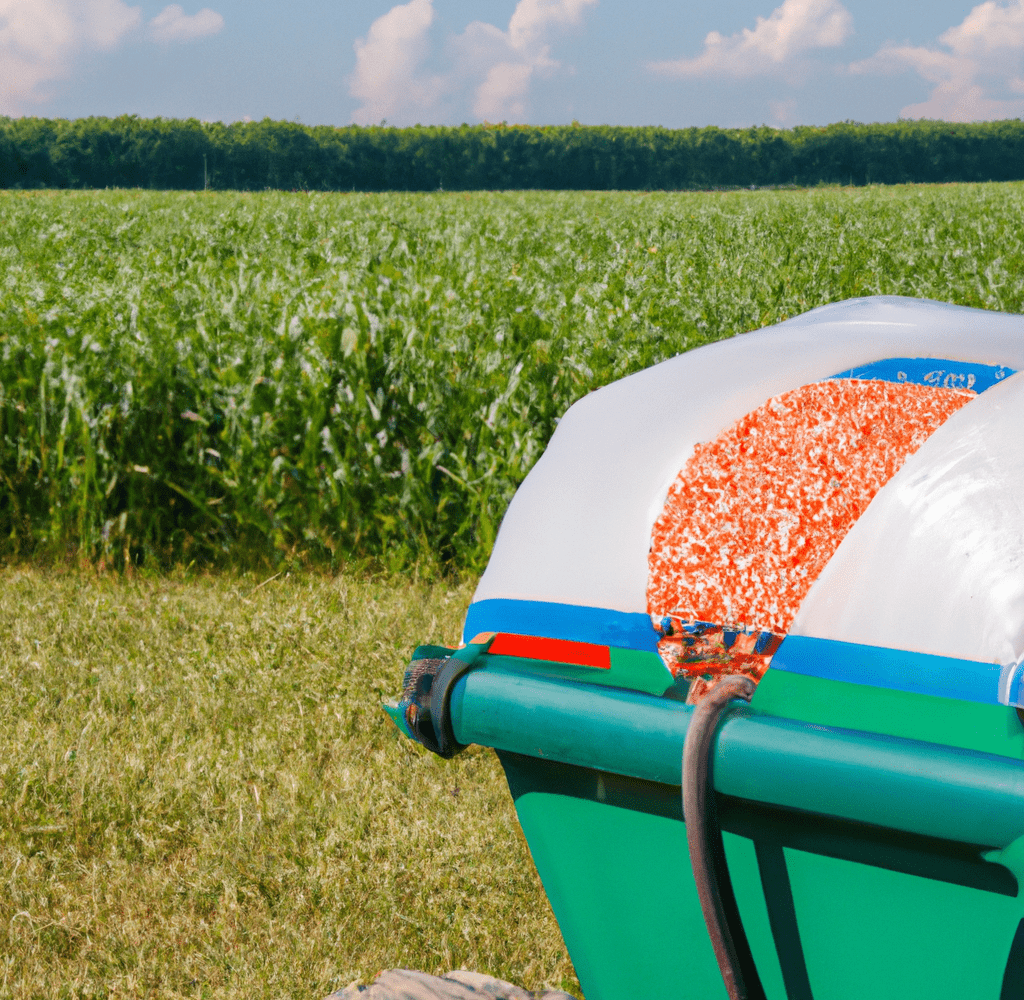
How Chemical Fertilizers Are Used in Different Types of Farming Systems, Such As Conventional, Organic, and Sustainable Agriculture
Understanding the various crop-growing systems is essential because agriculture is one of the main sources of food for the people. The most popular agricultural practices in the US are conventional, organic, and sustainable. These systems each employ various techniques to encourage plant development, safeguard the environment, and boost crop yields. The usage of chemical fertilizers is one of the main distinctions between these systems.
The most prevalent form of agriculture in the US is conventional, and it mainly relies on chemical fertilizers to boost crop production. These fertilizers give the plants vital nutrients, enabling them to develop quickly and generate more. However, the extensive use of chemical fertilizers has brought about a host of environmental issues, such as water contamination and soil degradation.
On the other hand, chemical fertilizers are not permitted in organic agriculture. Instead, organic farmers use organic techniques like composting to give plants the nutrients they require. Crop rotation and minimal tillage are just two examples of sustainable practices that are promoted by organic agriculture. Organic farming can still produce high-quality food while not using chemical fertilizers, and it is becoming more and more well-liked in the US.
Organic and conventional farming are combined to create sustainable agriculture. It places a focus on using natural techniques to enhance soil health, safeguard the environment, and boost crop production. Chemical fertilizers are also used in sustainable agriculture, but only sparingly and with the intention of enhancing long-term soil health. This strategy acknowledges the role of chemical fertilizers in modern agriculture and the value of environmental preservation while yet supplying the food required to feed the expanding population.
The Challenges and Limitations of Using Chemical Fertilizers
When discussing the role of chemical fertilizers in modern agriculture, we have to talk about its challenges and limitations:
- Chemical fertilizers can pollute soil and water if they are used excessively or improperly, which harms other wildlife and has a detrimental impact on growing conditions.
- The manufacture and use of these fertilizers can release nitrogen oxides into the air, which can contribute to pollution.
- The overuse of chemical fertilizers, which over time can harm the fertility and health of the soil is another issue. As a result, crop yields and quality may decline, and the soil may become more susceptible to erosion and deterioration.
- Excessive use of chemical fertilizers might result in the weeds being more resilient, making it more challenging to defend crops against unwelcome expansion.
- Chemical fertilizers can be expensive to employ, both in terms of money spent and the environmental damage they cause. Small farmers may find it difficult to buy these fertilizers due to their high cost, which may result in a reduction in the variety of crops planted.
Bottom Line: The Role of Chemical Fertilizers in Modern Agriculture
The food and other necessary products produced by the agriculture industry are crucial for the world’s expanding population. For plants to grow and stay healthy, which in turn influences the crop’s production and quality, fertile soil is essential. In order to promote crop yields and soil fertility, chemical fertilizers are frequently utilized in modern agriculture.
The role of chemical fertilizers in modern agriculture is renowned for their quick and effective action, feeding the soil with vital nutrients that improve crop yields. However, these chemicals have a number of disadvantages, such as soil erosion, pollution of the environment, and the accumulation of dangerous compounds in the food chain.
When deciding on farming practices and policies, it’s imperative for farmers and policymakers to take into account both the advantages and disadvantages of chemical fertilizers. Crop production enhancement and environmental and human health preservation must coexist in harmony. While still providing food security, sustainable farming techniques including crop rotation, soil conservation, and the use of organic fertilizers can assist to reduce the unfavorable effects of chemical fertilizers.
FAQs on The Role of Chemical Fertilizers in Modern Agriculture
What is the role of chemical fertilizers in modern agriculture?
Chemical fertilizers are substances that are used to provide crops with essential nutrients like nitrogen, phosphorous, and potassium needed for growth and development. Due of their usefulness and low cost, they are frequently utilized in modern agriculture. They help to improve crop quality and increase crop yields.
How long have chemical fertilizers been used?
Since ancient times, fertilizers have been used to improve the fertility of the soil and agricultural yields. Since their invention in the 19th century, chemical fertilizers have emerged as an essential part of modern agriculture.
What advantages do chemical fertilizers offer?
- Enhancing crop productivity and quality by supplying essential minerals like nitrogen, phosphorus, and potassium
- Simple crop management, lower labor expenses, and increased effectiveness
- Accelerating the production of food while improving food security
What drawbacks do chemical fertilizers have?
- Degradation of the soil due to overuse
- Fertilizers that have leaked into nearby bodies of water have polluted the water.
- gGeenhouse gas emissions from the use and manufacturing of chemical fertilizers
- Health risks associated with coming into contact with chemical fertilizers
What are the consequences of chemical fertilizers on the environment?
Chemical fertilizers have the potential to pollute the soil and water and increase greenhouse gas emissions. Reduced soil fertility, threatened aquatic life, tainted drinking water supplies, and climate change can all be consequences of these environmental effects.
Why is it crucial to take into account how chemical fertilizers used in modern agriculture may affect the environment?
Utilizing sustainable farming practices that improve soil health, protect water supplies, and lower greenhouse gas emissions is essential for protecting our world. By doing so, environmental issues including soil and water contamination and greenhouse gas emissions from agricultural operations will be less likely to occur.


